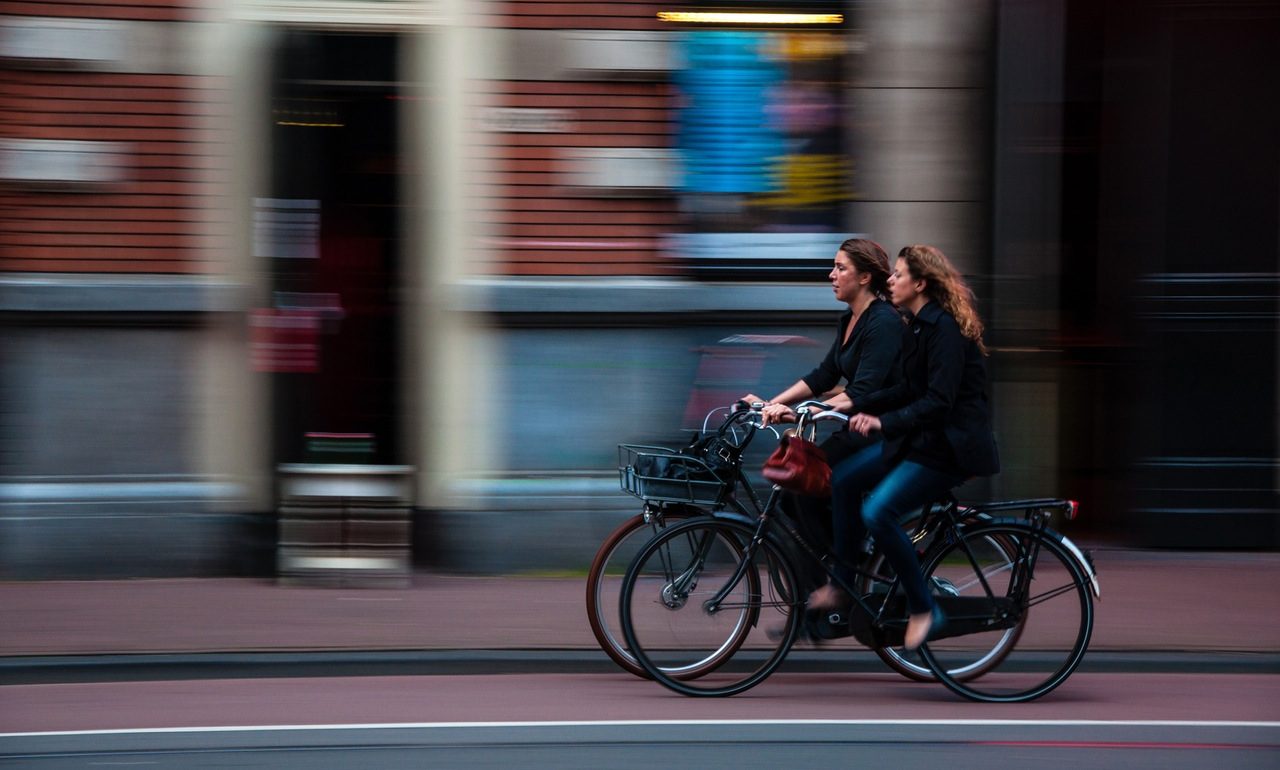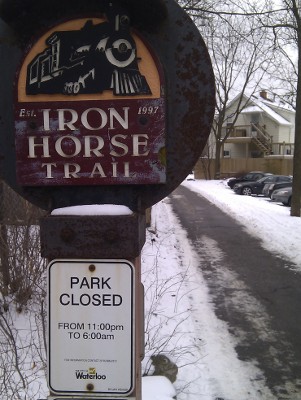Monday’s Waterloo City Council meeting had many delegations (as well as written correspondence) speaking passionately against moving the Iron Horse Trail between Park and Caroline Streets to give Mady Corp. an easier parcel of land for development. Overwhelmingly, citizens lucidly explained the issues in the new trail alignment — two walls, poor sightlines at the 90-degree turn, a crossing of a parking garage entrance, and others — as well as in the development itself. Nevertheless, all opposed delegations made it clear that they support intensification in this area — but that they expect better, especially if major concessions are granted.
In our presentation, Mike Boos explained that aspects of the new alignment — the proposed 2.0m width for biking (separate from the walking section), the path crossing a driveway, and the 90-degree turn — are at odds with the City’s own Transportation Master Plan and the draft of the Ontario Traffic Manual Book 18 on cycling facilities (PDF). A representative from Mady actually responded that they would certainly increase the cycling width to 3.0m, adding that they were not aware of the needs of cyclists.
After a meeting with some heated questions and discussion, Waterloo City Council approved the development re-zoning application and the trade of the Iron Horse Trail, in a 4:2 vote, with Councillors Melissa Durrell, Mark Whaley, Scott Witmer, and Mayor Brenda Halloran in favour, and Councillors Karen Scian and Diane Freeman opposed.
Roger Suffling, a professor of planning who presented on behalf of the Easy Riders Bicycle Club, has since weighed in with an excellent column on the bigger picture of the planning process. The editorial board of the Waterloo Chronicle has criticized the precedent the decision sets, and that of the Waterloo Region Record has pointed out that creative alternatives for that site should have been given due consideration much earlier.
In our experience and that of others who chose to present, the general trail-using public became aware of this proposal either through the last minute media coverage, or only after the decision was made. The only outreach to general users of the trail was a standard development application sign on the site. Neither were alternatives for development or routing at any point presented for public or Council consideration. Given that, it’s hardly surprising that there is a protest planned (see also).
Going forward, it’s clear there will be and needs to be substantial public involvement in the design of the corridor between Park and Caroline Streets in the new alignment. But with staff and Council saying that part of their interest was in addressing issues with the current trail alignment, there is also still the possibility for the City of Waterloo to consult with the trail-using public on creating additional alignments for cyclists through that general area that would avoid the issues we and others have pointed out in the new section.
Read More »


